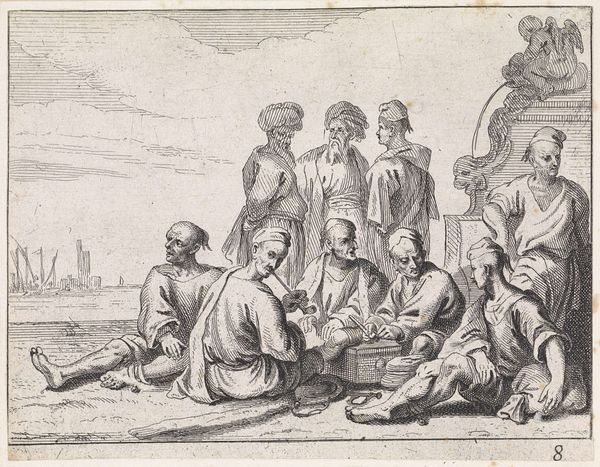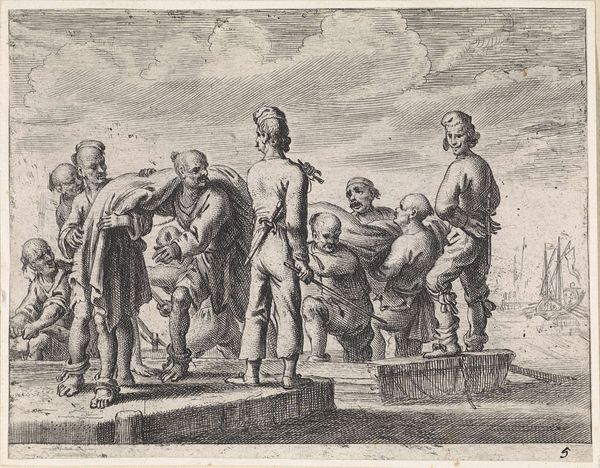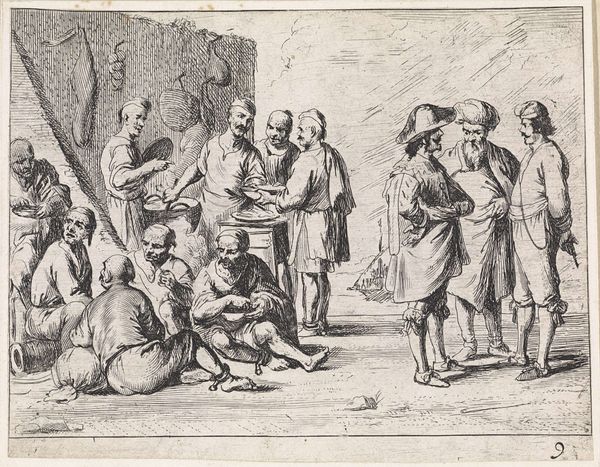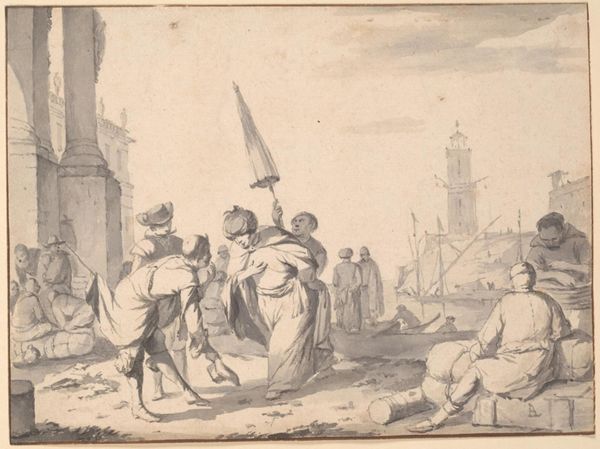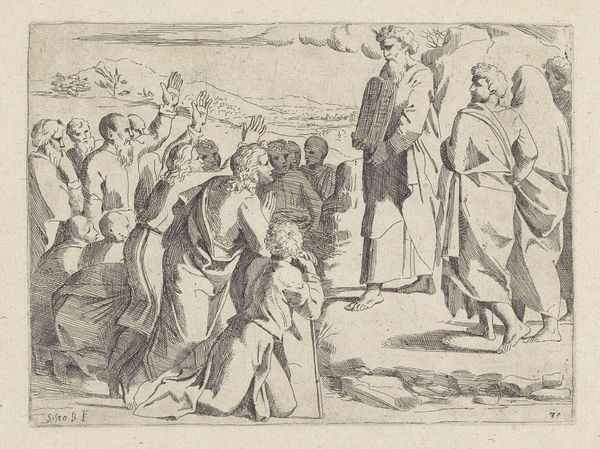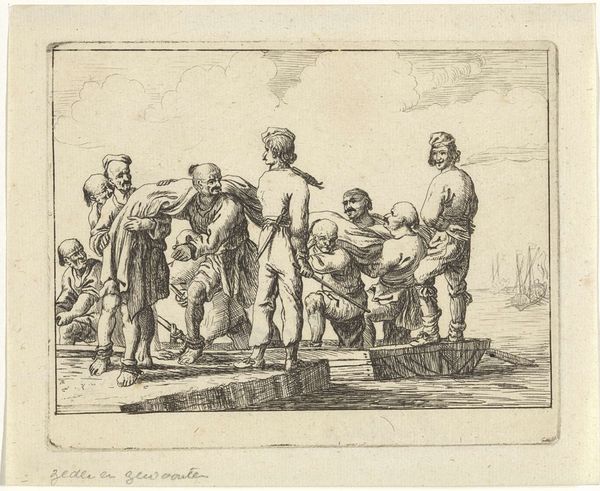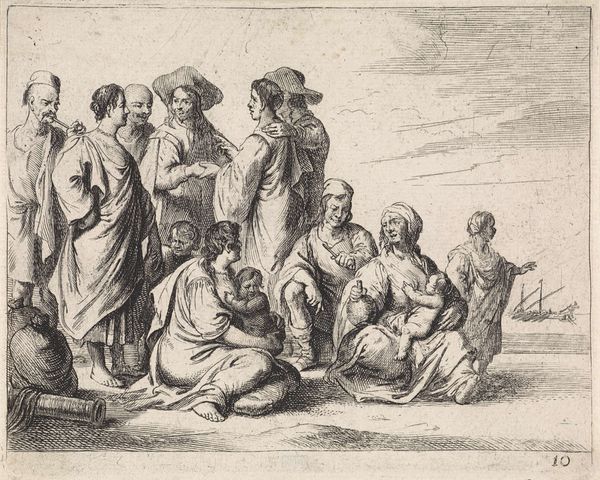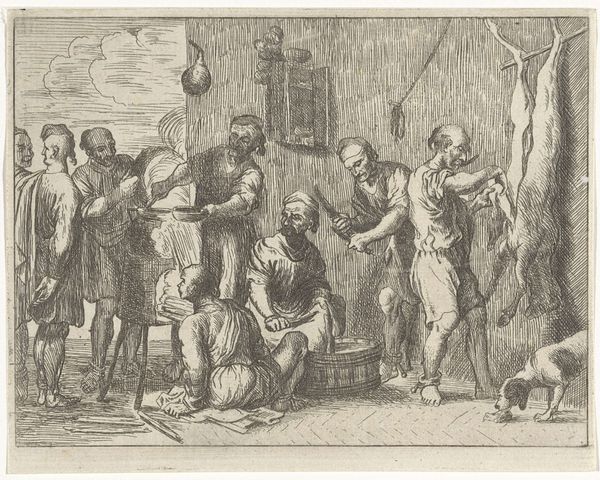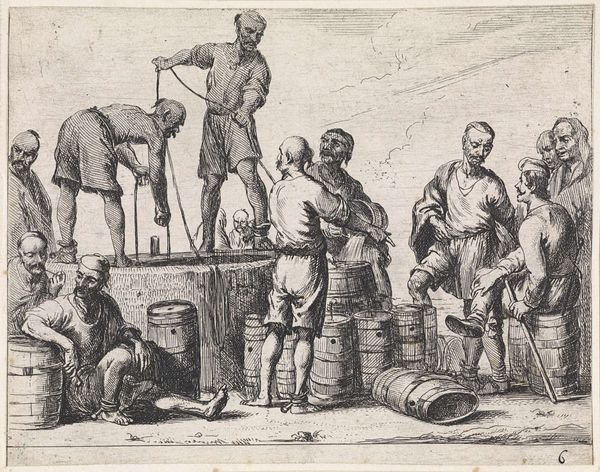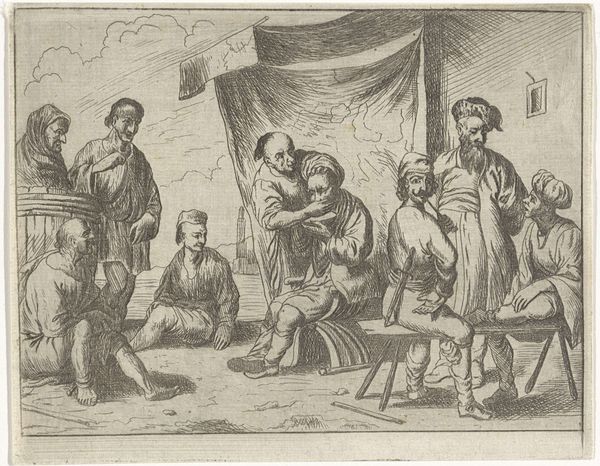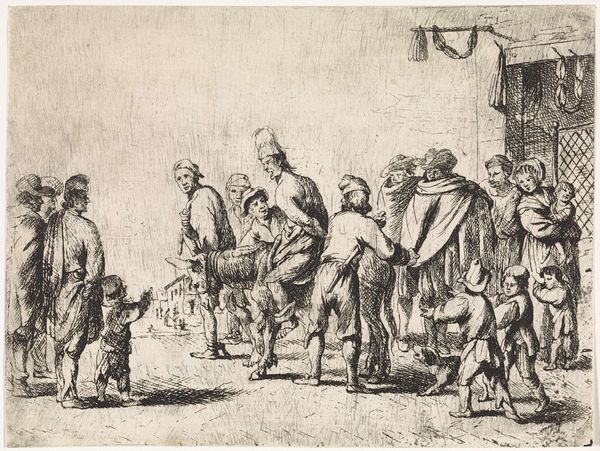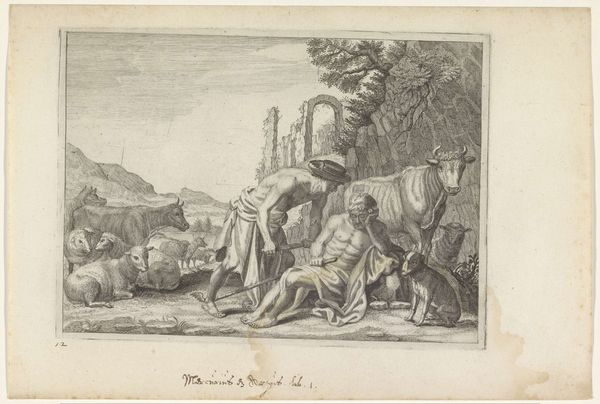
#
light pencil work
#
mechanical pen drawing
#
pen sketch
#
pencil sketch
#
personal sketchbook
#
ink drawing experimentation
#
pen-ink sketch
#
sketchbook drawing
#
storyboard and sketchbook work
#
sketchbook art
Dimensions: height 117 mm, width 147 mm
Copyright: Rijks Museum: Open Domain
Curator: This etching by M. Schaep, created around 1649, is titled "Islamic Galley Slaves Resting by a Fountain". My initial impression is of quiet desperation etched into each figure. Editor: Yes, a somber tone pervades the work. Note how the composition leads the eye. We move from the delicate detail of the fountain on the left, across the varied postures of the men, to the faint suggestion of ships in the background. Curator: The use of line is quite masterful here. Observe the hatching and cross-hatching—how they define form and texture, from the rough-spun garments to the weary faces. It almost transcends the limitations of its medium. Editor: And consider the subject matter! It speaks volumes about the complex relationships of trade, conflict, and exploitation between Europe and the Islamic world in the 17th century. Were these men prisoners of war? Captured during raids? The image prompts critical questions. Curator: It certainly draws attention to social hierarchies, though primarily as structural element: how they're positioned spatially –some seated on the ground, others standing – subtly emphasizes degrees of subjugation. Editor: Precisely, but seeing that now, one must address this visual encoding of power. This is not merely a scene of rest; it’s a scene infused with forced labor and religious bias. What were the implications of portraying these men, identified by their Islamic identity, in this state of rest and servitude? Curator: By acknowledging the political ramifications alongside a deep consideration of how Schaep constructed a detailed depiction using lines, shading, and composition to articulate narrative tensions is where our approach becomes most powerful. Editor: A difficult, powerful work then. A confluence of technique, history, and representation leaving one contemplating the long echoes of such depictions and how it speaks about our own age, especially given the visual choices presented to us as viewers today.
Comments
No comments
Be the first to comment and join the conversation on the ultimate creative platform.
